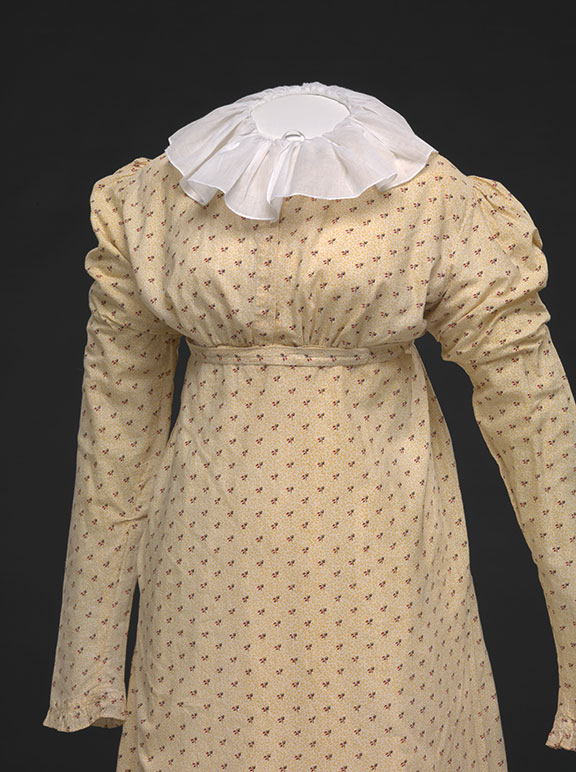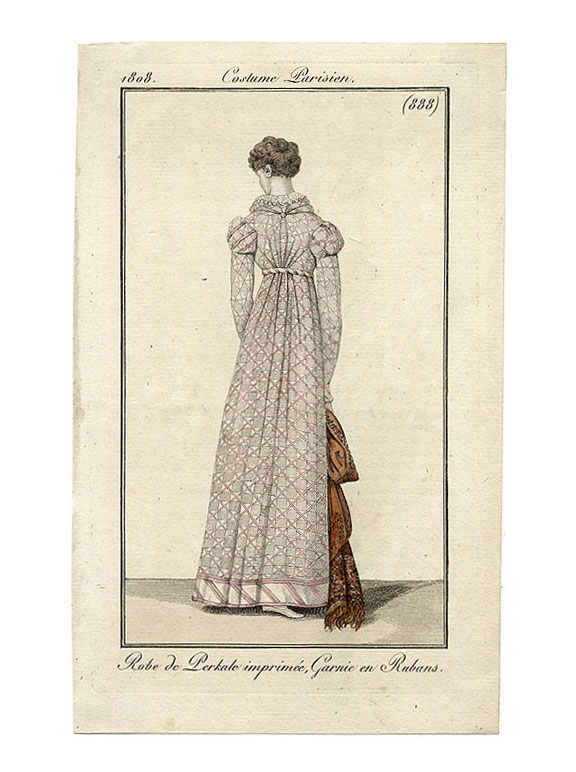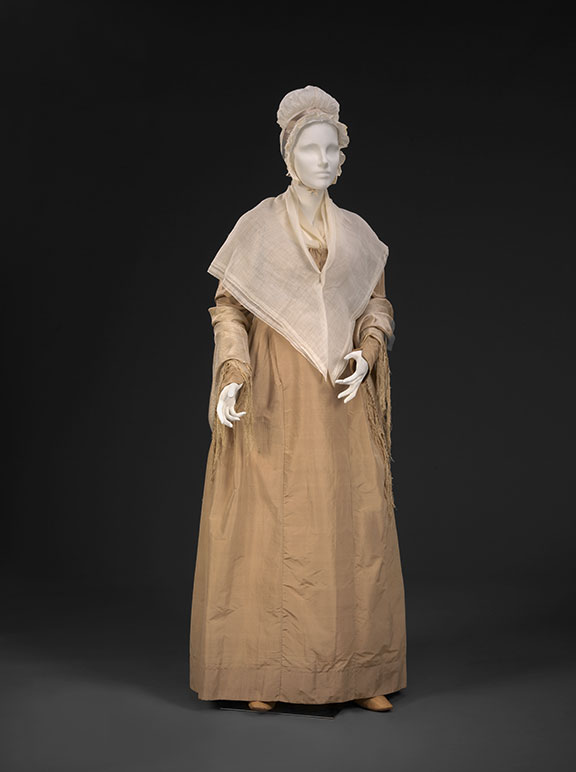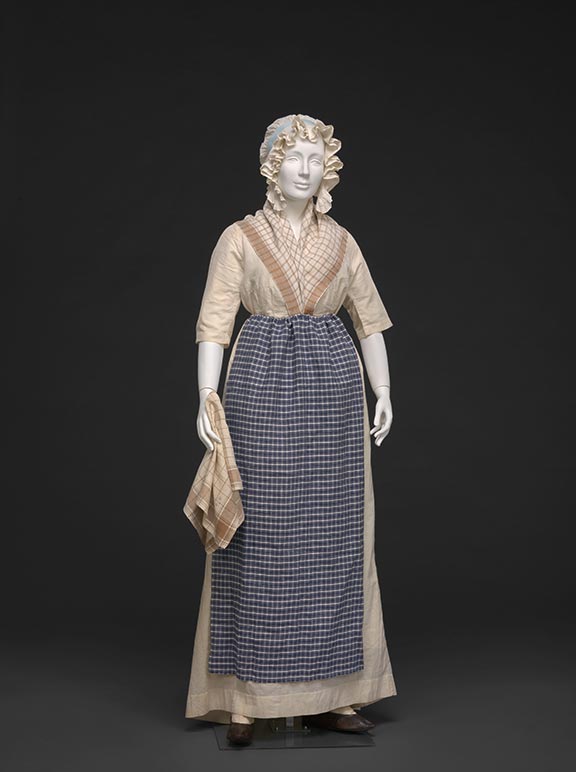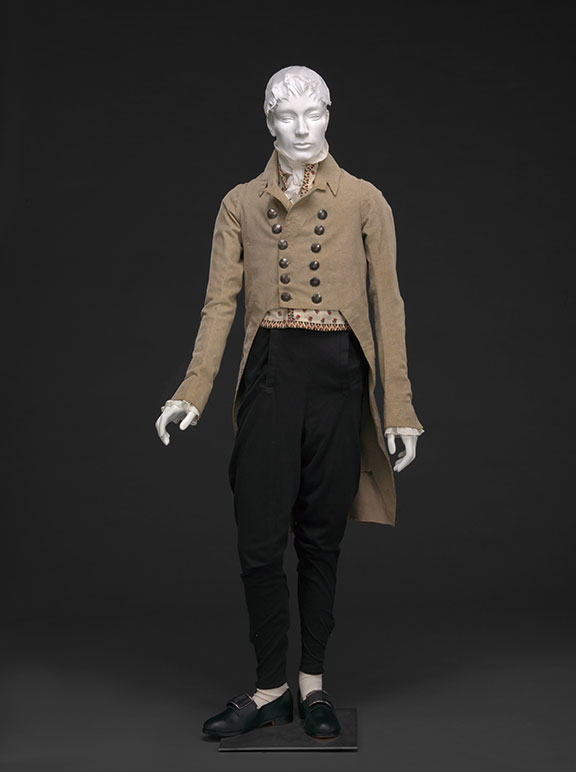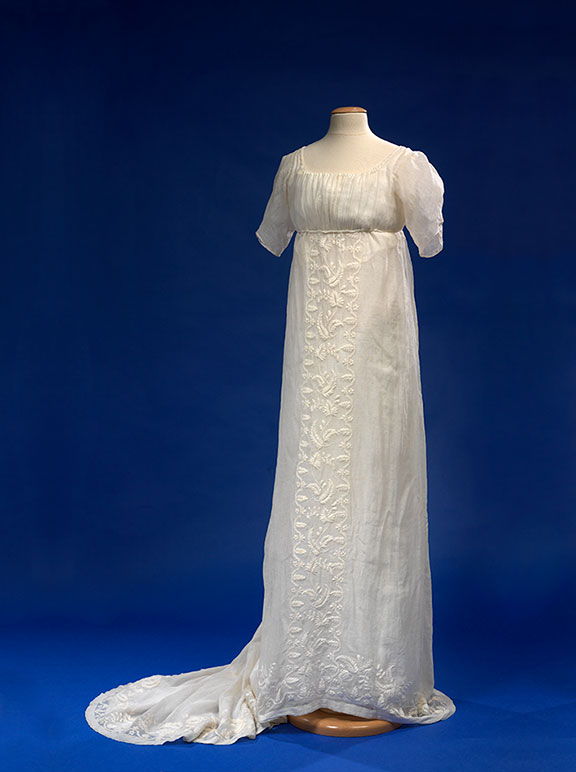Apron-front Dress
About 1805-1810
Style: After the revealing styles of the turn of the century, less revealing styles began to prevail, as seen in this dress’s longer sleeves and high neckline. Both higher and lower necklines were commonly filled in with either kerchiefs, or more fashionably, “chemisettes” like this one. A chemisette is essentially what we would call a dickey, usually with a collar or one or more ruffles around the neck, tying around the wait under the dress.
Fabric: This cheerful roller-print has a mere one-inch-high repeat, with just three colors: red and black printed atop a yellow vermicelli design printed on white. Three colors and a one-inch repeat are typical of early roller-printed fabrics. Cylinder-printing technology had not yet figured out how to print large-scale, multi-colored designs—this will soon change! But the delicacy of small-scale designs is well-suited to the slender silhouette and simple styles of this period.
Dress of roller-printed cotton, probably English, sewn and worn in either England or United States, 98.2.2, Friends of the Museum Purchase; reproduction chemisette.
Printed cotton dress, 1808, Journal des dames et des modes (Paris).

